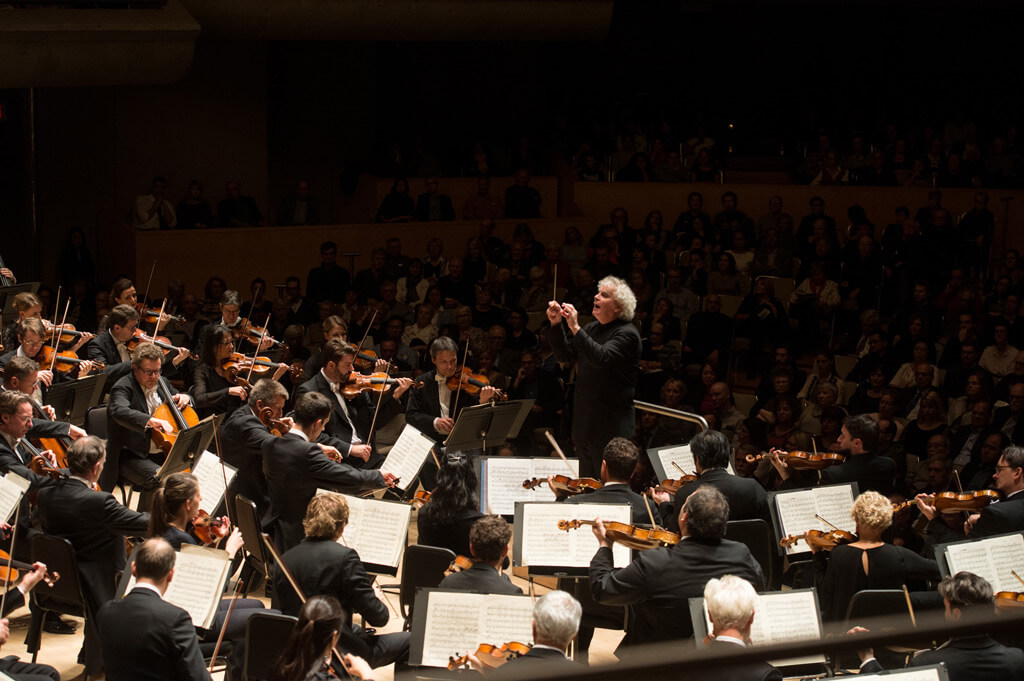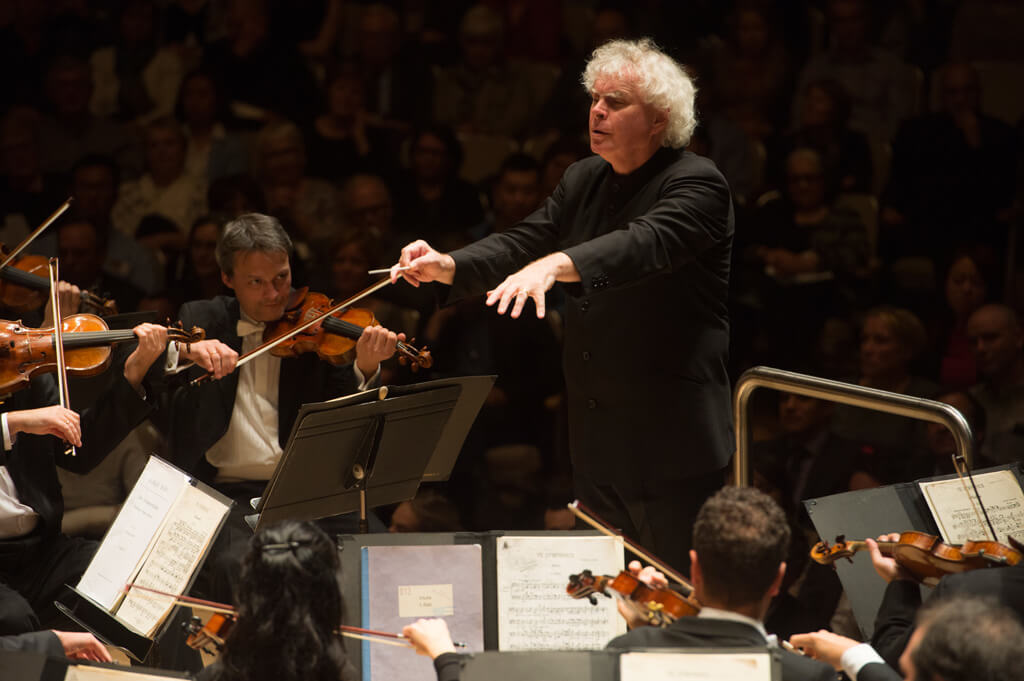
Berlin Philharmonic with Sir Simon Rattle, Nov. 15 and 16 at Roy Thomson Hall.
The Berlin Philharmonic has long been a force in the living rooms and libraries of the world, through an immense discography and, more recently, a digital streaming service. Yet there is nothing quite like the real thing, as Torontonians were made aware this week in Roy Thomson Hall, where Sir Simon Rattle led two programs that could be taken as a compact anthology of repertoire they do surpassingly well.
There was a lot to like, even a lot to like best. My choice, possibly because it is still ringing in my ears, is Brahms’s Second Symphony, the send-off selection of Wednesday night. It would be hard to imagine a more convincingly Brahmsian balance of cohesion and clarity, everything warm yet speaking with an independence that made the composer’s mastery of detail apparent.
Rattle, conducting from memory, was very much part of the conspiracy, coaxing subtle shifts of time and volume, often with a graceful left hand, that rendered the first movement a wonder of nostalgia with no disobedience of the Allegro ma non troppo marking. Of course, the blazing trumpets of the finale had their tonic effect, but there was no less excitement in the middle section of the third movement, the pinpoint stings making every stress count.
Violins were divided left and right, as they often are these days, with violas and cellos seated centrally — a configuration that paid radiant dividends in the opening of the slow movement and the lullaby-ish second theme of the first movement. My only regret was Rattle’s unaccountable decision not to take the first-movement repeat (and thus to shear away transition music of some distinction). Hey, we like Brahms. We do not mind hearing the exposition again.

Before intermission came what was surely the Canadian premiere of Schoenberg’s Five Orchestral Pieces, Op. 16, Webern’s Six Pieces for Orchestra Op. 6b and Berg’s Three Orchestral Pieces Op. 6 run together as a 14-movement Second Viennese School Suite or — as Rattle fancifully proposed in an address to the audience — Mahler’s Symphony No. 11. Food for thought here, and ideas to object to. As a professor pointed out to me after the concert, such a conflation requires the consent of composers, not just the will of a conductor.
All the same, there were many beauties in what amounted to more than 50 minutes of atonal music, unbroken by applause. Vorgefühle, Schoenberg’s initial piece, was teeming with life, and the famously athematic Farben unfolded in a mesmerizing calm. Muted brass has seldom sounded so full of purpose in Webern, and if Berg’s grandly orchestrated triptych threatened to overfill our already sated skulls, there were ravishing sounds, and even sights, as a percussionist wielded a giant hammer to theatrical effect. It was worth noting in the menacing march that concluded Rattle’s “symphony” that the conductor took care to maintain, amid all the musical madness, the security of a steady beat.
On Tuesday the main event was Mahler’s almost-80-minute Symphony No. 7, the most intractable and indefinable of the brood. Climaxes came quickly in a performance that was less about probing ambiguities than affirming what we know for sure. The opening tenor horn was strong, not neurotic, and the second theme came off as an expression of tough love. If the development lacked something in mystery other conductors have brought to it, were there handsome sounds to sustain our admiration.
The blaze of the finale could hardly have been brighter. Some argue that Mahler’s “sunburst” resolution, introduced with a manic timpani display, is ironic, too good to be true. Rattle says C Major is C Major. Those seeking nervous energy got plenty in the Scherzo but the movement that impressed me most was in the second titled Nachtmusik. Players who elsewhere stressed togetherness spoke with individual voices — the clarinet flickering so gently at the end. Subtle dynamics made the evocation of nature complete. Yes, the Berlin Philharmonic can do chamber music.
As, indeed, a squad of 15 had already demonstrated in Pierre Boulez’s Éclat, a nine-minute exercise in sudden jabbing dissonance and ad-lib discourse that was as fascinating through its first five minutes as it was over after that. This hypermodern piece of 1965 featured a mandolin and a guitar, as did the Mahler. If the sounds were inscrutable, Rattle and the Berliners endowed them with paradoxical precision.
The second night had the look of a sellout. On Tuesday there was a depressing array of empty seats in the loft behind the orchestra. If these tickets cannot be sold at the usual stratospheric rate, I say make them available to students at a discount. Credit is owing Roy Thomson Hall and the TSO for making these great concerts possible. As many people as possible should have heard them.
#LUDWIGVAN
Want more updates on Toronto-centric classical music news and review before anyone else finds out? Follow us on Facebook or Twitter for all the latest.
- SCRUTINY | Moussa Concerto Sounds Strong In Toronto Symphony Orchestra Premiere, Paired With Playful Don Quixote - April 4, 2024
- SCRUTINY | Esprit Orchestra At Koerner Hall: Ligeti 2, Richter No Score - April 1, 2024
- SCRUTINY | Sibelius & New Cello Concerto By Detlev Glanert Offers A Mixed Bag From The TSO - March 28, 2024



